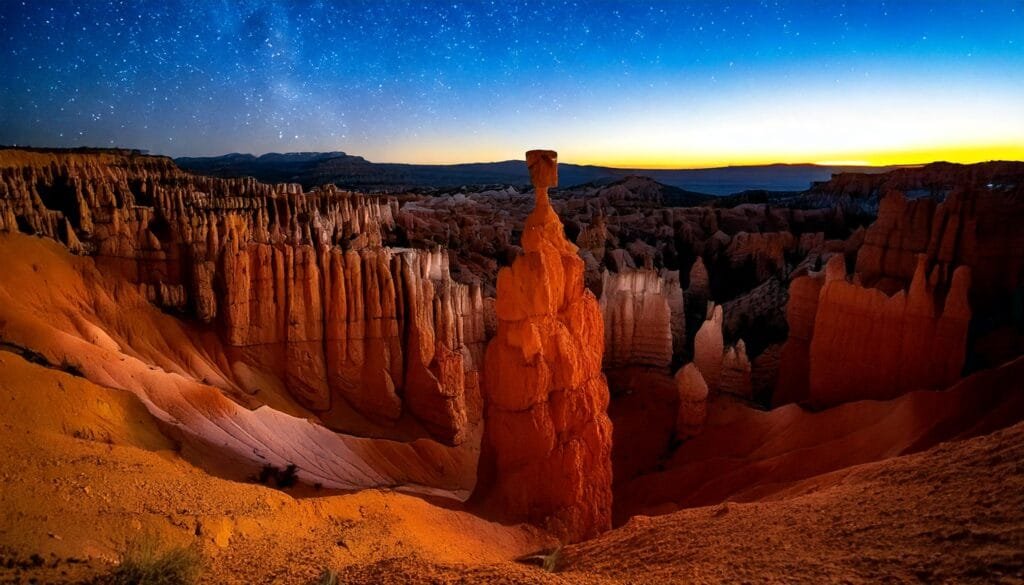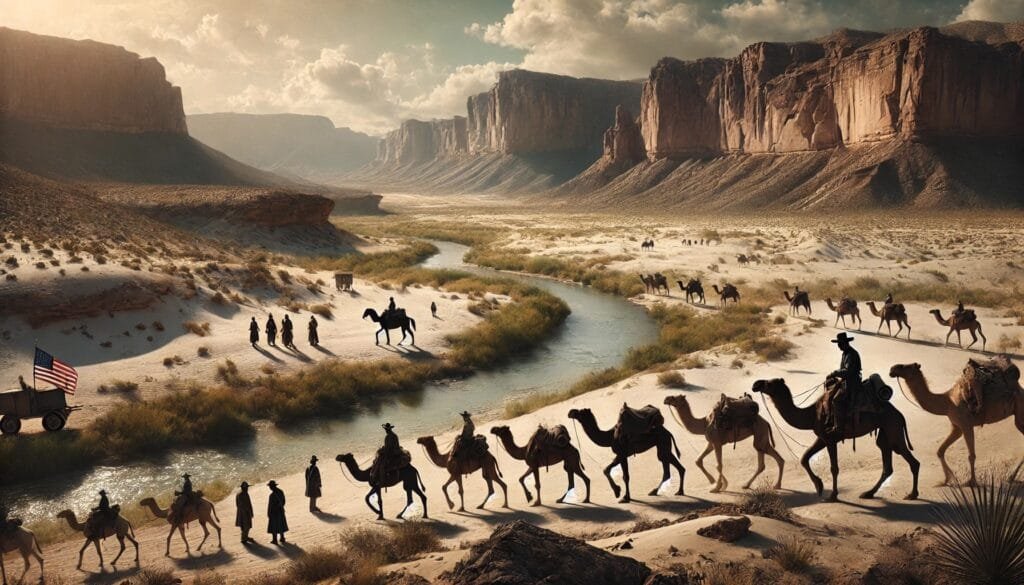Not your average rocky chasm, Bryce Canyon National Park is a magical landscape of natural wonders that has intrigued many travelers. This stunning park is located in southwestern Utah. It’s a place where breathtaking views and unique geological formations are common. Did you know Bryce Canyon is not actually a canyon? Let’s dive into that oddity and more in this week’s post. And yes, there’s even a jigsaw puzzle inspired by the iconic Thor’s Hammer!
Location and a Little Deception

Bryce Canyon is in Garfield County, Utah, and is part of the Colorado Plateau. So, about that name. Bryce Canyon is technically a collection of giant natural amphitheaters carved out by frost weathering and stream erosion. The most famous is Bryce Amphitheater, which stretches over twelve miles and is filled with unique rock formations called hoodoos. These tall, skinny spires are still standing after centuries of erosion. They create a landscape so mesmerizing that it almost looks like Mother Nature’s puzzle.
The park’s location makes it an ideal spot for both daytime exploration and nighttime stargazing. Its remote, high elevation provides minimal light pollution and some of the darkest night skies in the contiguous United States. This is the place for those who appreciate both the tranquil beauty of nature and the mysteries of the cosmos.
From Discovery to National Treasure
Humans have inhabited the area for thousands of years. The first were Native Americans. Later, Mormon pioneers moved in. It wasn’t until the early 20th century that the area gained popularity as a tourist destination.
In 1928, Congress designated Bryce Canyon a national park, preserving its unique beauty and geological significance for future generations. It became a beacon for adventure seekers and nature lovers alike. It’s a perfect place to escape the hustle and bustle of daily life and enjoy a serene, awe-inspiring environment.

Did You Know?
Why is it called Bryce Canyon?
While the name might suggest otherwise, Bryce Canyon isn’t technically a canyon shaped by a river. Instead, a process known as headward erosion carved amphitheaters into the edge of the Paunsaugunt Plateau. In this process, the edges of the bowls slowly retreat due to freezing and thawing cycles that break apart rocks.
Among the colorful background of this area is the story of Ebenezer Bryce. In 1874, Bryce homesteaded land in the region. Bryce was known for building a road into the canyon to help with his logging operations. As time went on, the local residents began referring to the area as “Bryce’s Canyon.” Bryce also gets credit for a terribly funny description of the landscape. He called the area a “helluva place to lose a cow.”
Unique Red Color
The area around Bryce Canyon was once covered in dense forests. Over time, geological and climatic changes transformed the landscape. Over time, erosion helped form the unique rock structures and hoodoos we see today.
The vibrant colors of the park’s rocks are primarily due to iron oxide. This gives them their red, orange, and yellow tones. This mineral, commonly known as rust, is responsible for the rich and varied palette that makes Bryce Canyon so visually stunning.
From Utah National Monument to Bryce Canyon National Park
Bryce Canyon was first designated as a national monument by President Warren G. Harding in 1923. However, it wasn’t until 1928 that Congress passed legislation establishing Bryce Canyon National Park, making it the fifth national park in the United States.
Coincidentally, there are also five national parks in Utah. Bryce is the smallest of the five, which include Zion, Canyonlands, Capitol Reef, and Arches. Each of these parks has unique geological formations and breathtaking scenery, making Utah a must-visit destination for any outdoor enthusiast.
Final Thoughts and Looking Ahead
Bryce Canyon National Park clearly demonstrates nature’s artistry. Here, the forces of erosion and the local, colorful history continue to captivate visitors. I hope you enjoyed today’s puzzle and the jigsaw puzzle inspired by Thor’s Hammer, one of the park’s most iconic hoodoos. Looking ahead, I hope you’ll join me next week for the wonders of Vermont’s Lake Champlain. From its picturesque landscapes to its rich history, there’s much to discover in this New England treasure. Stay tuned for more adventures to feed your curiosity and ignite your wanderlust!
If you enjoyed this post and the puzzle, please leave a comment with your time on the puzzle. I’d also love to hear your thoughts on the post! Thanks for being here!
Did you miss last week’s Friday Morning Post and jigsaw puzzle? If you did, you can use this link to view Discover the true story of camels in Big Bend or view all my Friday Morning posts here.




13:59 Been a few decades since I’d been in the area. Forgotten how beautiful it can be.
Wish my kids could see it in person. Pictures just do not do it justice.
I was there once years ago. It’s a beautiful place. My time was 8:49.
7:40, gorgeous country
11:38
7:19, always look forward to your puzzles! They are always so beautiful.
6:21 A lovely place. A place I planned to visit in 2020 and the hotel cancelled the reservation due to the pandemic. There are plans to view Bryce Canyon in the future.
6:14 thanks so much for giving us these puzzles, enjoy them alot!
10:18 and thank you once more for the delightful puzzle
9:58
11.01 today.
My time today was 5:48. I loved reading how Bryce called the canyon a “helluva place to lose a cow”!
So did I, Susan. I thought it was hilarious and knew I had to share it.
5:31
This is one of our favorites stops whenever we head south. It’s beautiful, even in the winter.